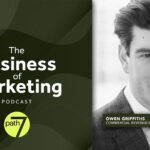While we may have experienced a summer of sport – festival season also made its mark. And with a jam packed schedule of both large scale and niche festivals, from Glastonbury and Coachella to Ultra and Bludfest – there really is a festival for everyone.
Festivals offer an experience unlike anything else, and their exponential rise in popularity over the last decade has seen more and more cropping up all over the world, offering immersive and irl experiences within music, culture, art and food.
While the variety of festivals on offer mean that there is something for everyone, it also means that there is a huge opportunity for brands to get involved, target both niche and broad audiences depending on the festival demographic, and tap into the shared sense of community and social experience that will stay with festival goers for a lifetime.
Brands are showing up in more ways than ever before. So, we spoke to leaders in adland to get their thoughts on the best activations of 2024, and what they would like to see more of for festival seasons to come…
Mayas Ayyash, Strategist, Saffron Brand Consultants
 Activations at festivals are top real estate for those looking to connect with audiences in meaningful ways.
Activations at festivals are top real estate for those looking to connect with audiences in meaningful ways.
This year at Glastonbury, brands explored creative ways to build memorable interactions with their audiences. In these fun-filled contexts, it’s proven that it works best when brands are of service, rather than pushing too hard for a sale. The most successful brand activations at festivals appeal to fans’ basic needs, no matter how straightforward those needs may be (think Vodafone for Wi-Fi, Jimmy’s Iced Coffee for drink, etc.).
One brand that understands how they fit within the festival experience is heritage brand Barbour in their partnership with Oxfam. They launched a ‘re-loved’ initiative that let people rent upcycled vintage jackets for the full festival weekend to keep warm in case of unpredictable weather conditions – with all proceeds going to Oxfam. Barbour has long been considered the unofficial Glastonbury uniform so it was always going to appeal to fashion sensibilities, but it also meant festival-goers didn’t have to lug around heavy coats when the sun finally came out. They got to style themselves in unique attire, all while feeling good about their purchase.
It goes to show that brands opting for activations with really overt branding, making it about themselves rather than an exchange of value, are going to be overlooked. Balancing creativity and value creation is key for brands who want to captivate during these precious memory-making moments.
Eleanor Lavender, Copywriter, Imagination
 Known for its humanitarian efforts, rejection of consumerism, and mud, Glastonbury is an interesting challenge for brands – but presents an opportunity to do some good that benefits the planet.
Known for its humanitarian efforts, rejection of consumerism, and mud, Glastonbury is an interesting challenge for brands – but presents an opportunity to do some good that benefits the planet.
Barbour rented out second hand jackets and bucket hats, with all proceeds going to Oxfam, while Chilly’s set up refill stations to encourage people to use its reusable bottles.
GWR joined the action with the ‘Shania Train’. A silly yet relevant reaction to the Legend Slot performer’s comment on a podcast interview where she revealed a Swiss train is named after her. That does impress me much.
Some missed the mark, such as Papa Johns who offered free pizza in exchange for precious Glasto wristbands. Free food is normally an instant hit but not when it involves giving up a prized souvenir, especially when there’s a growing trend of everyone loving brand merch.
Meanwhile, over at Wilderness, Audi was its first headline partner. With experiences like the calm Audi Haven and a Michelin-starred banquet at the Audi Kitchen, they fit perfectly with the festival’s artistic and serene vibe. It felt more like an alignment than a takeover, showing that Audi is a brand that’s cool, creative and (most importantly) fun.
Robin Lickliter, Chief Experience Officer, Sparks
 Brands have worked exceedingly well this year to create memorable experiences for festival-goers and are becoming more inventive in the way they connect with these consumers. Music is emotional, and that means a festival has a built-in audience of connected attendees. Allowing an activation to be informed by the vibes of a festival– instead of using a one-size-fits-all marketing mentality – is critical. And genre-specific festivals have an even higher level of engagement for attendees, so they present even deeper opportunities for brands.
Brands have worked exceedingly well this year to create memorable experiences for festival-goers and are becoming more inventive in the way they connect with these consumers. Music is emotional, and that means a festival has a built-in audience of connected attendees. Allowing an activation to be informed by the vibes of a festival– instead of using a one-size-fits-all marketing mentality – is critical. And genre-specific festivals have an even higher level of engagement for attendees, so they present even deeper opportunities for brands.
Of course, the challenge is to create long-term impact with festival activations that last beyond the Instagrammable Moments and convert attendees into brand loyalists.
Next year, I’d like to see more activations involve utility. A festival is a great place to show proof points in a brand’s promise. Hunter at Glastonbury [2024] was a practical and engaging activation that showed the heritage of the Hunter brand, demonstrated knowledge of that festival, and provided what was needed: a “wellie wash” station. Charmin showed up at the Roots Picnic with luxury restrooms – something everyone needs at a festival! Kohler brought shower stations to Bonnaroo. Utility not only provides every day solutions but also feels helpful and generous in the moment. These types of brand experiences resonate. More of that, please.






